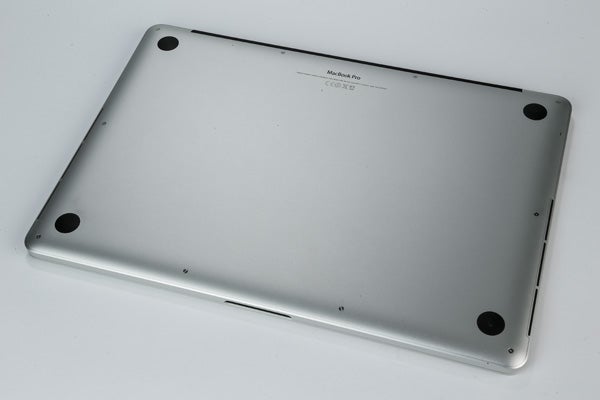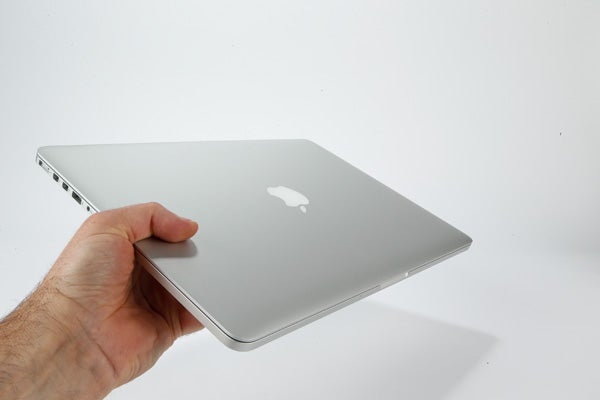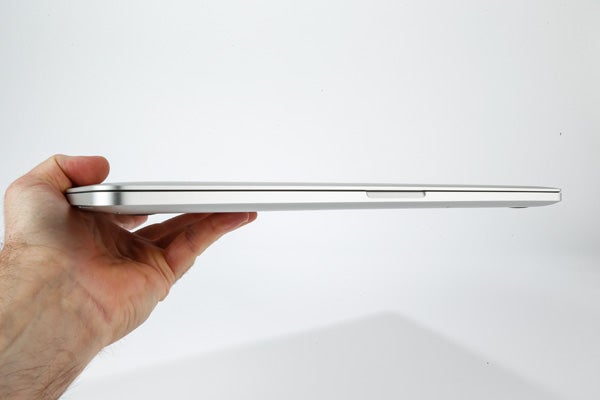MacBook Pro with Retina display 15-inch (2013) Review - Performance and Battery Life Review
Performance and Battery Life
Workstation performance without the workstation bulk, but it comes at a hefty premium.

Sections
- Page 1 MacBook Pro with Retina display 15-inch (2013) Review
- Page 2 Performance and Battery Life Review
- Page 3 Keyboard, Touch Pad & Verdict Review
15-inch MacBook Pro: Performance
There are two basic versions of the 15-inch MacBook Pro: the 2.0GHz version (£1,699) with Intel Iris Pro graphics, a 256GB SSD and 8GB RAM; and a 2.3GHz version (£2,199) with an 2GB GeForce GT 750M, 16GB RAM and a 512GB SSD. Our test version was the latter more powerful version, and its performance is a tale of two opposing points.
In general use, it flies. The quad-core CPU and PCI-e SSD ensure there’s virtually no delay doing everyday tasks. Geekbench 3 shows this setup is only marginally slower than the top-end 2013 27-inch iMac we reviewed recently, too. The MacBook scores 13,517 in this test compared to 14,462. The next fastest laptop we’ve tested is the £1,500 Alienware 14, which scored 12,509 in the same test using a similar 2.4GHz quad-core CPU.

By any reasonable measure this makes the 15-inch MacBook Pro a seriously fast laptop, one particularly well-suited to intensive CPU tasks such as video editing and heavy-duty image editing. Indeed, unless you’re planning to do these kinds of things on a regular basis then this laptop is overkill for you.
Things aren’t quite so impressive on the graphics side, however. Our MacBook Pro pairs its built-in Intel Iris Pro graphics (the standard option) with a 2GB Nvidia GeForce GT 750M. This is good enough to play many games at decent settings, but a glance at the results from Unigine Heaven benchmark shows the MacBook is only marginally faster than the Asus N550JV, a laptop that costs a cool £1,000 less.
In the ‘basic’ test at 1,366 x 768 test it average 30.3fps compared to the 26.3fps of the Asus. Putting aside the differences in design, screen quality and other less measurable factors, it’s a little disappointing that this £2,000 laptop only performs to a similar level as a laptop at half the price. Even accepting that this isn’t a gaming laptop, it feels as if it ought to have a little more graphical grunt for the money.

15-inch MacBook Pro: Heat & Noise
Of course, the flip side to this argument comes when you look at things like heat and noise. Here the MacBook Pro reminds us why it costs so much. Does it make noise under load? Yes, of course it does, but the level of noise and heat is impressively low even under duress. When doing basic tasks, you’ll be hard pressed to notice its running at all.

15-inch MacBook Pro: Battery Life
And it’s much the same story where battery life is concerned. We can’t run the same test on MacBook’s as we do Windows laptops, so it’s hard for us to compare, but the MacBook Pro lasted 10 hours when left to browse the web overnight, refreshing the same web page every two minutes. This was at 50% brightness, making it a very good result no matter how you look at it — the 13-inch MacBook Air lasted a similar time in the same test, though that was pre-Mavericks and its power saving features.
We don’t expect the MacBook Pro will last 10 hours during general use, particularly when doing the kinds of things a laptop this powerful is best at. But the fact it can last this long is very impressive, especially when you consider it doesn’t have a huge, hulking battery to achieve this.
How we test laptops
Unlike other sites, we test every laptop we review thoroughly over an extended period of time. We use industry standard tests to compare features properly. We’ll always tell you what we find. We never, ever, accept money to review a product.

